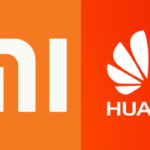Headless Magento 2: Why is it the right choice for your e-commerce website?
The past few years have made headless e-commerce a much talked about concept for online sellers. In fact, Magento predicted that it will soon be one of the most popular types of website architectures for B2B and B2C stores. As an e-commerce merchant, it becomes important to understand what the concept is all about and how it can be implemented for your online store. And if you are already running a Magento store or plan to invest in Magento development soon, you should be aware of headless Magento 2 and its benefits. Here is an overview of headless Magento 2 and all that you need to know about its benefits and implementation.

First things first, what is headless e-commerce?
Before you know more about headless Magento, it is critical to understand what headless e-commerce architecture actually is. It refers to a CMS which stores, manages and delivers content even in the absence of a front-end delivery layer. Essentially, the front end (you can visualize it as the head) of the store is decoupled and removed in a headless platform, while leaving only its back-end. Developers make use of APIs to deliver elements such as products, customer reviews, or blog posts to any device or screen. At the same time, front-end developers can work on presenting the content using a framework of their choice. Additionally, the headless architecture segregates the customer-facing concerns and the system-facing concerns. Further, it enables tailored development of the underperforming elements as well as focusing of resources on the performing elements.
Conversely, traditional e-commerce platforms come with the head screwed on tight. In other words, the front-end is tightly coupled with the back-end in these platforms. This means that even if the platform offers unrestricted access to code and plenty of customization features, it can only deliver content in the conventional forms, namely websites and native mobile apps. On the other hand, with headless architecture, brands can deliver products, content, and payment gateways to kiosk screens, Alexa Skills, smartwatches, and everything in between. In this way, it can be your first step towards making your online business IoT-ready.
What makes headless e-commerce popular?
There are two main factors that are responsible for the growing popularity of headless e-commerce. Let us explain them in detail:

Omnichannel capabilities
When e-commerce first came into existence, sales were relatively simple because they were confined to the desktop only. Consequently, the development platforms that came up at that time were all-inclusive in nature, with the front-end and back-end coupled together. But with the growth in technology and customer expectations, the buying channels became multivariate in nature. At present, businesses have to deal with a complex matrix of buyer touch points and omnichannel has become the way of selling online. Aligning with the omnichannel approach is easier said than done because it demands a flexibility which full-stack solutions can seldom execute. As the front-end and back-end are closely bonded, it is practically impossible to change one without touching the other. Headless e-commerce, however, offers the flexibility needed in this context.
Easy integration
Numerous brands which originally used their sites as content repositories now want to explore the myriad opportunities that the e-commerce domain offers. Obviously, they would not want to lose the massive amount of content which already exists. From the implementation perspective, it will be feasible to build an e-commerce engine and connect it with the existing CMS instead of creating a new store and migrating the existing content into it. The headless architecture comes ahead as a great solution as it enables quicker and easier integration for such websites. This makes entry into the e-commerce space much easier for the existing businesses.
What are the benefits of headless CMS platforms?
Embracing a headless CMS such as headless Magento 2 brings several benefits for an e-commerce business. These are listed below:
Flexibility
Consumers have big expectations from e-commerce stores, which makes it imperative for them to offer more online shopping capabilities. Ideally, the front end should be easy-to-use and seamless, while the backend should be capable of handling complex transactions. Since these are decoupled for a headless CMS, brands can update the customer-facing content layer without having to disrupt the business infrastructure. For instance, the marketing team could easily showcase a new promotional campaign to the customers without needing to rely on professional developers for a full system reconfiguration.
Speed
A decoupled architecture enables the merchant to make rapid changes to the front-end without touching the back-end. This means that you can easily and quickly add new functionalities and integrations to the store without investing much time and money. By taking the headless approach, you ensure that your business adapts to the latest technologies with speed and stays updated with customer expectations.
Personalization
When it comes to achieving the targeted growth for your e-commerce store, personalization is the key. The competition in the domain is stiff and there is a need to stand apart with personalized shopping experiences for your customers. Since headless systems are undisruptive to each other, there is much scope for experimentation without fearing that your site’s speed will be hampered or there will be any other issue. Similarly, customizing the functionalities of the store is easy with decoupled integration.
When is headless Magento 2 an apt option for businesses?
Headless Magento is specifically apt for e-commerce businesses that already have a CMS but want to scale their offering in accordance with their growth requirements. Content-rich online stores with multiple media content elements are on the top of the list of the ones that should prioritize headless Magento 2. Similarly, ones that are experiencing rapid growth can get the best benefits from the platform. The headless approach empowers them to create highly-personalized customer experiences that drive growth in terms of sales and customer engagement. Similarly, large businesses with massive portfolios can utilize Magento 2 headless for exercising content governance by enforcing tagging and storage rules, branding guidelines, and workflow approval processes.
What are the next steps?
Understanding these facts about headless Magento 2, it becomes obvious that the approach can help to create a distinctive e-commerce store both from the front-end and back-end perspectives. This means that it will excel in terms of customer experience as well as management for the admin, making it a great business opportunity for any e-commerce seller. But before you can avail the advantages of a headless architecture, you will have to get it implemented in the first place. The best way to start is by collaborating with a seasoned Magento 2 developer who can understand your present and future business requirements and plan an implementation accordingly. Only an expert can do it right with you and assist you in leveraging headless Magento 2 to your advantage.
















